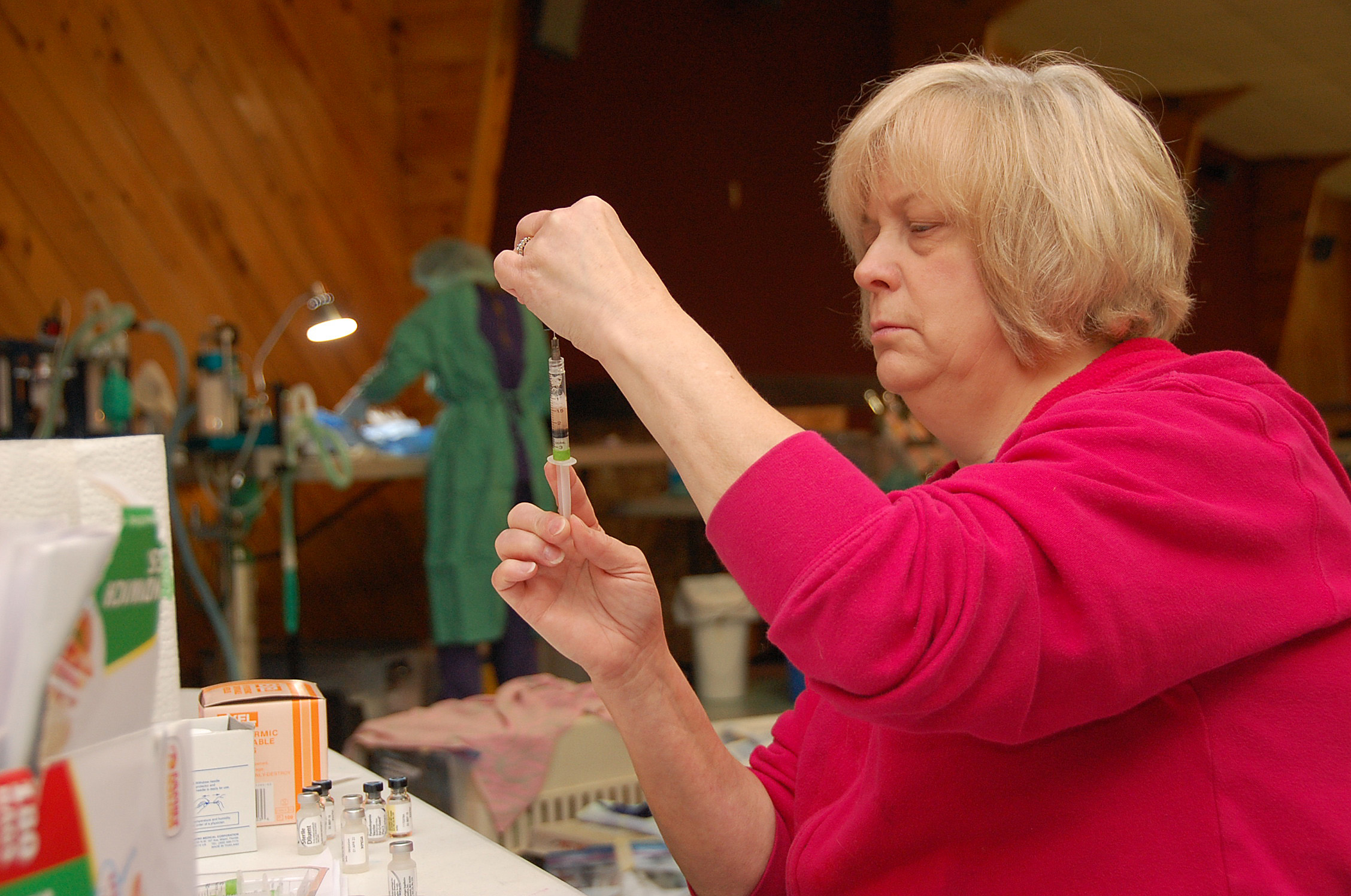
HOULTON, Maine — It has been estimated that as many as 70,000 puppies and kittens are born each day in the United States. Most are not planned.
According to Animals Abused and Abandoned Inc., a national organization that provides emergency medical and surgical care for domestic animals, one female cat having five kittens three times a year for seven years would be responsible for 420,000 offspring.
The greater Houlton area is not immune to this overabundance of cats. The Houlton Humane Society takes in an estimated 250 cats each year. According to Courtney Nelson, medical manager at the society’s shelter on Callaghan Road, 85 percent of those cats have not been spayed or neutered. Adding to that, she said that as many as a dozen of those cats are already pregnant, giving birth to five, six or even seven kittens while there.

Dr. Nan Buery of Bridgton, working with the Conway (NH) Area Humane Society, performs a sterilization on a cat during the Houlton Humane Society’s August spay-neuter clinic in Houlton. (Courtesy/Wayne Brown)
The pregnant cats compound the space problem at the shelter because cats cannot be spayed or neutered until they are 12 weeks old. The shelter only adopts out sterilized animals.
“At two kittens per cage, that’s a lot of space that gets taken up,’’ Nelson noted, adding that it can be stressful for the cats.
“They’re coming in faster in the back door than we can get them [adopted] out the front door,’’ said Catherine Virgie, shelter manager. The clinics, she said, help reduce the population of unwanted kittens, “the ones that get left behind in apartments or kicked outdoors.”
To combat problems of unwanted cats, the HHS has sponsored two spay-neuter clinics so far this summer with a third planned for October. The clinics, which are coordinated through the Spay Maine Help Fix ME initiative of the state Animal Welfare Program, are open to low income residents for a reduced fee of $10, which also includes a rabies shot. The regular cost is about $80. So far, more than 165 cats have been spayed or neutered.
“It makes us very happy when we get to work with people who otherwise wouldn’t be able to do it,” said Dr. Elizabeth Stone, who with her staff from the Community Spay-Neuter Clinic in Topsham was in Houlton for the most recent clinic. “It’s the best success ever to reach people who have the fewest resources.” Each cat brought into the clinic is given a full examination before surgery. After cats are given anesthesia, there respiratory and heart rates are closely monitored throughout the operation before they are moved to a heated recovery area which is again monitored by a staff member. The typical surgery lasts between three and seven minutes, depending on the animal’s gender. Cats go back home with their owners several hours later to fully recover.
The clinics are important because, “We get to help the community,” Virgie said.
“We don’t get the opportunity to do it that often. We don’t have the money.” The end result, Nelson added, is that, “It’s better for the animal, better for the owner, and better for the shelter.”







